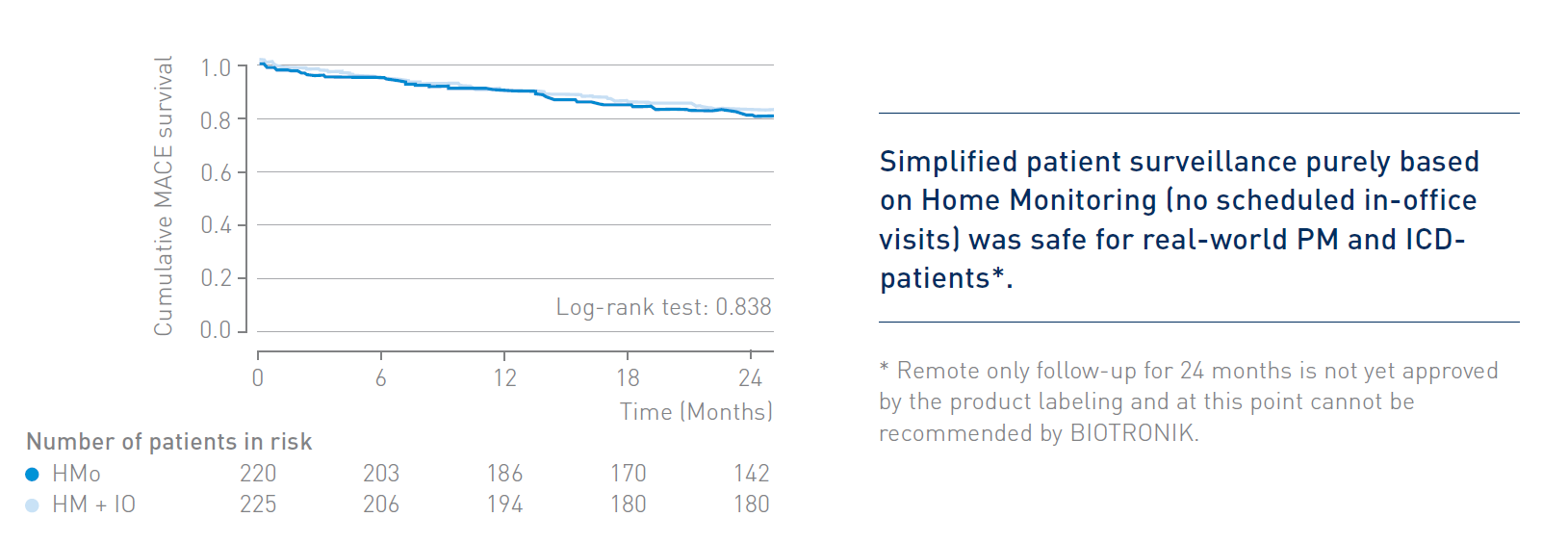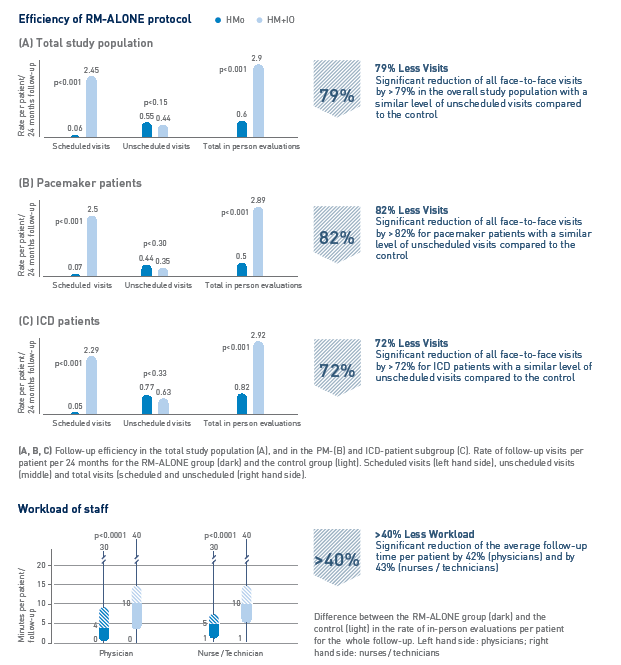Key Results
Key Result 1
The RM-ALONE protocol demonstrated non-inferiority in terms of safety in comparison to continuous remote monitoring associated with on-site visits every 6 months for the overall population of PM- and ICD patients.

Safety and efficiency of a common and simplified protocol for pacemaker and defibrillator surveillance based on remote monitoring only: a long-term randomized trial
GARCIA FJ ET AL., EUROPEAN HEART JOURNAL 2019
The RM-ALONE protocol demonstrated non-inferiority in terms of safety in comparison to continuous remote monitoring associated with on-site visits every 6 months for the overall population of PM- and ICD patients.

Patient surveillance exclusively based on Home Monitoring (RM-ALONE Protocol) reduces number of follow-up visits and clinical workload
